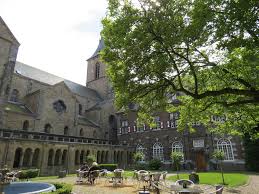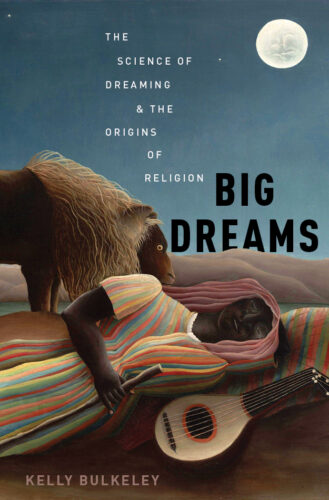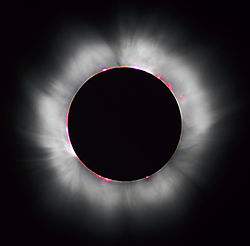 At this year’s annual conference of the International Association for the Study of Dreams (IASD), held June 24-28 in Kerkrade, the Netherlands, the world’s leading dream researchers gathered to share their latest findings. The conference ran for four and a half days, with six or seven simultaneous tracks of events going on from morning through the evening. It was truly a feast of dreaming!
At this year’s annual conference of the International Association for the Study of Dreams (IASD), held June 24-28 in Kerkrade, the Netherlands, the world’s leading dream researchers gathered to share their latest findings. The conference ran for four and a half days, with six or seven simultaneous tracks of events going on from morning through the evening. It was truly a feast of dreaming!
Every year it takes me a while to process and digest all the events, conversations, and impressions that occurred during the conference. It’s way too much to take in while there, so I try to keep notes and then reflect on them over the summer and fall. As I look through my notes from this year, these strike me as the highlights from the latest IASD gathering:
Iain Edgar, an anthropologist at Durham University in the UK, gave a chilling presentation on his investigations into the dream beliefs and practices of Islamic jihadists, who are using social media with remarkable effectiveness to share their violent dreams and encourage others to do so as well.
Pilleriin Sikka, a lecturer in cognitive neuroscience at the University of Skovde in Sweden, described the challenges of accurately measuring emotional content in dreams. (A current debate in the field: are dreams predominated by negative emotions, or do dreams have a roughly even balance of positive and negative emotions?) Her study highlighted the importance of transparency in the methods used for studying this aspect of dreaming, because different methods often yield different results.
Nils Sandman, a doctoral student at the University of Turku in Finland, reported on a national demographic study in Finland that found higher nightmare frequency is associated with insomnia, depression, low life satisfaction, suicidality, and generally poor health. This supports clinical theories that recurrent nightmares are possible symptoms of mental and physical illness.
kitt price, a senior lecturer in modern and contemporary literature at Queen Mary University, London, described their historical and cultural analysis of the use in 19th and 20th century Britain of mass media to gather public reports of precognitive types of dreams. The BBC and other media outlets gathered thousands of such reports, many of which remain available for study today. price’s research suggests that interest in paranormal dreaming does not diminish in modern Western societies, but expresses itself through different kinds of media.
Alaya Dannu, an MFA student in creative nonfiction from the UK, discussed the ongoing influence via dreams of the beliefs and customs of civilizations that no longer exist (e.g., from pre-colonial Africa). She brought together art, anthropology, history, and her own personal experiences to illustrate the way dreaming helps to shape a personal and collective sense of identity over time.
Alison Dale and Joseph DeKonick, psychologists from the University of Ottawa, presented findings on gender differences in the dreams of Canadians that showed males have more dreams of aggression while females have more dreams with family and friend characters and more negative emotions. These findings fit with those from research on the dream patterns of other nationalities, adding strength to the idea that some tendencies of dreaming have roots in deep psychological processes shared by many if not all humans.
Don Kuiken, a psychologist from the University of Alberta, talked about his ongoing work on “impactful dreams,” focusing in this presentation on what he calls “existential” dreams of intense sadness, often following a loss or death of a loved one, which can paradoxically lead to “sublime disquietude” and greater aesthetic appreciation for life. Kuiken’s research has been an inspiration to me for many years, and this new development brings his impactful dreams work into dialogue with his earlier studies of dreams and the philosophical aesthetics of Samuel Taylor Coleridge.
Wojciech Owczaraski, from the University of Gdansk in Poland, described a project devoted to gathering dream reports from survivors of the Auschwitz concentration camp in WWII. This promises to be an important and heart-wrenching collection of dreams.
Caroline Horton and Josie Malinowski, psychologists at Bishop Grosseteste University and University of Bedfordshire, respectively, both in the UK, described their research testing the role of dreams in emotional assimilation. They found the strongest effects in dreams with greatest emotional intensity and personally important material. Researchers continue to debate the issue of how much of a role, if any, dreaming plays in memory, learning, and information processing. Several studies at the conference reported negligible results in experiments involving dreams and memory consolidation, and Horton and Malinowski’s project was the only one that found an angle of approach that might be promising.
Antti Revonsuo and Katja Valli, cognitive neuroscientists at the University of Turku in Finland, gave talks about their “social simulation theory” of dreaming, whereby dreams function to provide simulations of social situations that have relevance for evolutionary fitness and survival. This theory grew out of Revonsuo’s earlier studies of “threat simulation” in dreaming. The main advantage of Revonsuo and Valli’s current approach is that it builds on empirical research about dream content—quantitative data about the actual dreams of a large and wide variety of people. This kind of research has shown that dreams are filled with characters, social interactions, and verbal communications. These are the features of dreaming Revonsuo and Valli are trying to explain in terms of the evolutionary history of human cognitive functioning.
These are only some of the sessions I personally attended; there were many other great presentations I didn’t get to see but only heard about from other people.
The conference as a whole left several general impressions about the state of dream research.
First, new advances in various areas of investigation make it clear the mind’s activities in sleep are much more complex and sophisticated (“high-level”) than mainstream psychologists have long assumed. The numerous presentations on lucid dreaming and cognition during the sleep state support this deepening of our understanding of how the mind works (and plays) during sleep and dreaming.
Second, there has been tremendous growth in empirical data, but not as much progress in theoretical understanding. Researchers have more detailed dream material to look at than ever before, but they have very little to say that’s new about what dreams mean or how they function. My concern is that the real gains that have been made in describing the neurocognitive processes involved in dream formation are not improving our understanding of the role of dreaming in healthy human functioning. Very few researchers (Revonsuo and Valli being exceptions) try to locate their studies within a bigger theoretical framework. Perhaps this is simply the stage we’re at, following the demise of psychoanalysis and brainstem reductionism; we know that was wrong, but we’re still not sure what’s a better model. So in the meantime, we gather more data.
Third, and in tension with the second, the practical use of dreams in clinical and therapeutic contexts continues to expand and diversify. Professionals and laypeople involved in caregiving, whether in hospitals, school health centers, private therapy practices, hospice groups, churches, or non-governmental organizations, are using dreams as a valuable resource in helping people gain insights into their suffering and find their way back towards health and wholeness. Many conference presentations described the positive healing effects of bringing dreams into the therapeutic process, in almost every kind of clinical modality.
At some point the researchers and the clinicians are going to have to talk to each other…. perhaps with new technologies for studying dreams as the mediating link.

 In the past couple of weeks I have spoken several times with journalists about
In the past couple of weeks I have spoken several times with journalists about  On Friday, February 19, I will visit with
On Friday, February 19, I will visit with 

